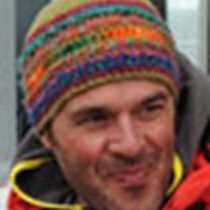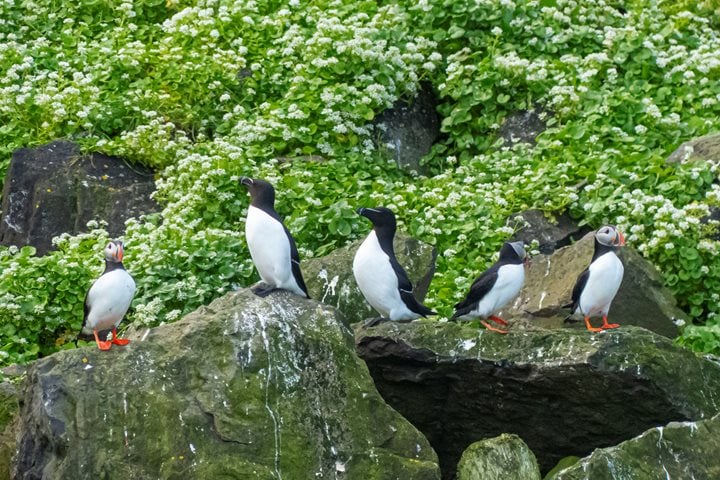We found the edge of the sea ice during the afternoon yesterday and, as expected, with it came interesting wildlife. Very few ships intentionally go into the pack ice, but National Geographic Explorer is built for it, and we hoped for more wildlife encounters.
Embracing a south westerly course, we advanced through dodging blue ice flows and searching for the animals that make this seemingly inhospitable place their preferred habitat. Early in the morning a juvenile hooded seal was spotted and approached cautiously but it leapt into the water. Although brief, it was our first encounter with this Arctic species. Fulmars, kittiwakes, thick-billed murres, and dovekies were among other birds also spotted.
Before lunch however, the fog that had been hanging around us settled down and thickened and our visibility was greatly reduced for most of the rest of the day. The situation prevented us from jumping into Zodiacs for a planned cruise in the afternoon given that very hard multi-year sea ice, fog, strong currents, and poor visibility are not a very good combination to go out searching for wildlife.
That is, of course, if you are not one of our very intrepid explorers. A good 33 of us decided to prove that we are not inhibited by harsh conditions and jumped into the almost freezing waters (a mere -0.9º C) for a polar plunge in the Greenland Sea! Many went back for a second and quite a few for a third time even! Others (perhaps more sound and clear minded?) did not succumb to temptation or foolishness and stood their ground even though peer pressure mounted when the side gate finally opened. We salute you and respect you!
For all our efforts (either going or NOT going into the frigid waters) we were all rewarded with a ‘real’ teatime on the outer deck, barbequed sausages, and beer! It definitely does not get more native than that, especially when you are sailing around a tabular iceberg, one that was probably calved from an ice shelf in Greenland and has made its way south with the winds and currents that dominate this region.
Even the sun made a brief appearance, which changed the light conditions providing a great and rare opportunity to see and photograph the fulmars flying so close to us, as we learned about them from Tom Ritchie.







